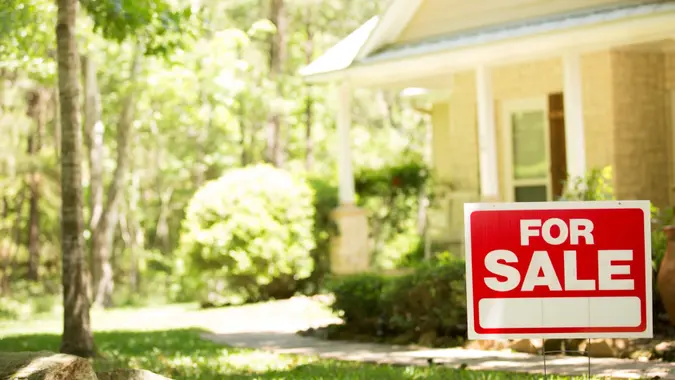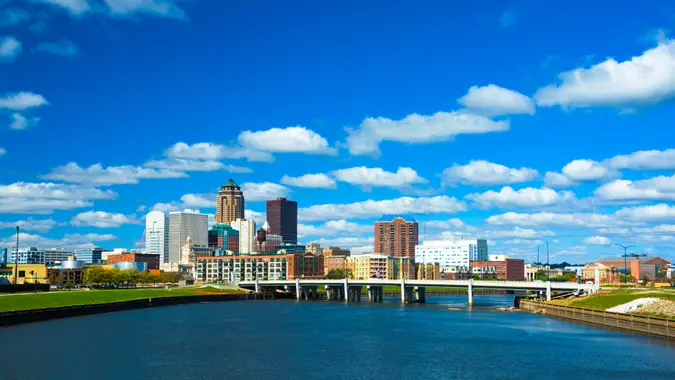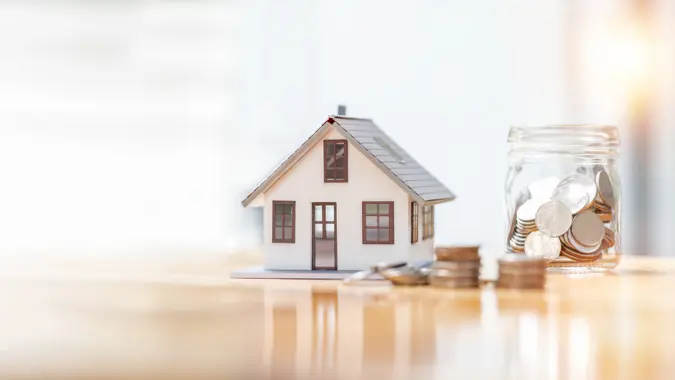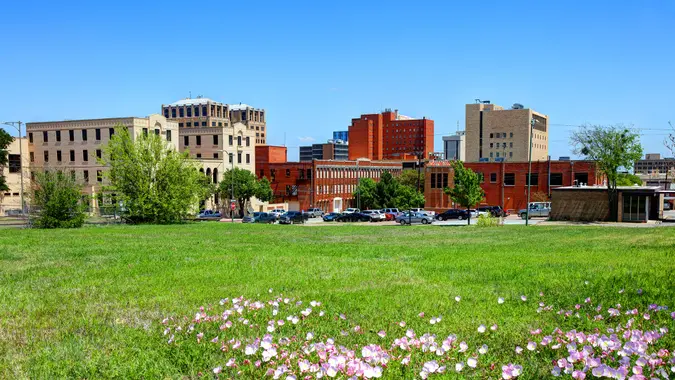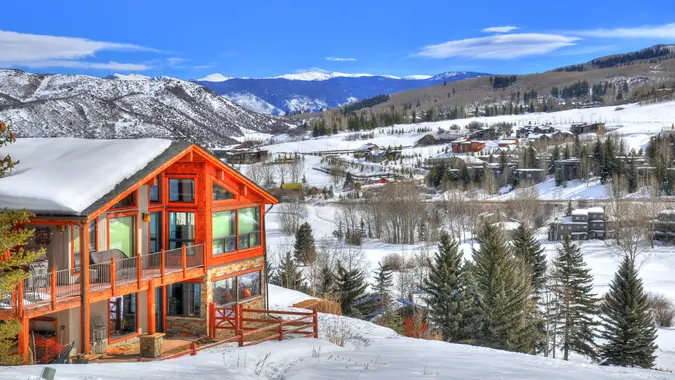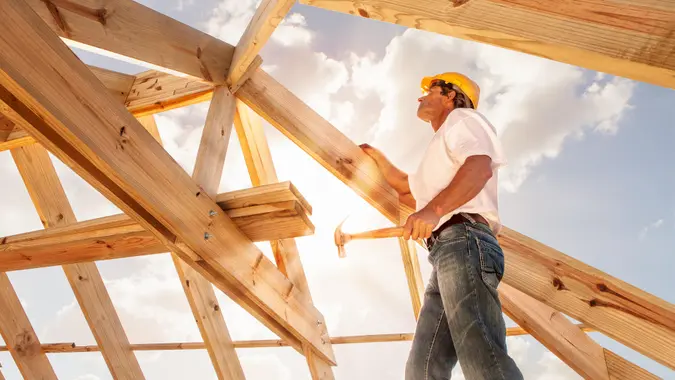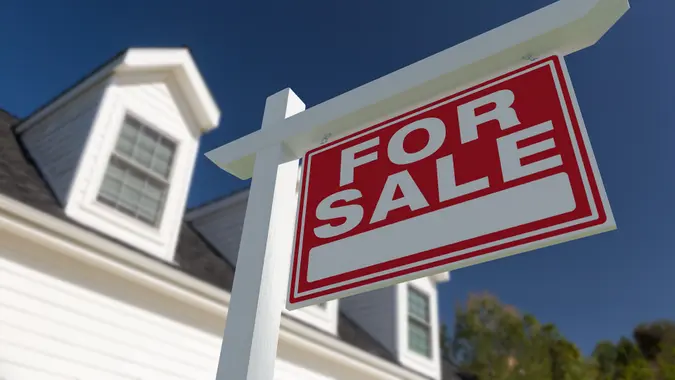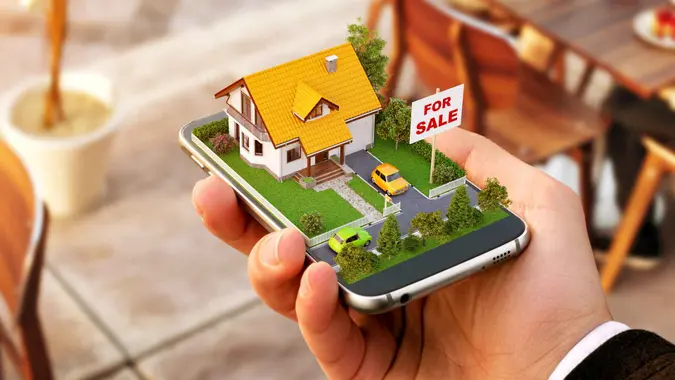These 4 Types of Homes Are Most Likely To Be Uninsured — Here’s Why

Commitment to Our Readers
GOBankingRates' editorial team is committed to bringing you unbiased reviews and information. We use data-driven methodologies to evaluate financial products and services - our reviews and ratings are not influenced by advertisers. You can read more about our editorial guidelines and our products and services review methodology.

20 Years
Helping You Live Richer

Reviewed
by Experts

Trusted by
Millions of Readers
According to a recent Consumer Federation of America analysis, 7.4% of homeowners didn’t have property insurance in 2021, which amounts to an estimated 6.1 million homeowners in the U.S. The analysis reviewed data from the 2021 American Housing Survey, a biannual survey conducted by the Census Bureau.
While property insurance is a crucial expense that homeowners can’t avoid, the unfortunate reality is that there are many uninsured properties nationwide. Here are the different types of homes that are most likely to be uninsured and why.
Also see four reasons you definitely need homeowners insurance, even if the cost has gone up.
Lower-Value Homes
The analysis found that homes worth $150,000 or less are the most likely to be uninsured, as 19% don’t have coverage. The report also noted that many of these homes include manufactured homes and other options that are suited for lower-income individuals. For these individuals, homeowners insurance could be a larger financial burden.
“Some older homes cost much more to insure than they are actually worth,” said Erin Hybart, a Louisiana Realtor and founder of ReErin.com. “When money is tight, paying for insurance feels like an extra burden, and some homeowners choose to skip it to cover other essential expenses.”
Older Homes Built Before 2000
The report stated that homes built before 2000 have almost double the chance of being uninsured compared with those built in the last 20 years, as these can be an ideal option for low-income families.
Due to the older infrastructure, these homes are more likely to need expensive repairs and maintenance, so homeowners may allocate their funds toward handling those issues rather than paying for coverage.
Manufactured Homes
The analysis found that 35% of homeowners who live in manufactured homes have no insurance coverage, which is significantly higher than the 5% of homeowners of uninsured single-family properties. Since these homes are a cheaper alternative and a solution to housing affordability issues, they’re often the ideal starter homes for lower-income families and those living in rural communities.
The analysis found that many of these types of homes, including trailers, are in land lease communities, in which homeowners rent the space where they have their properties. Because many of these newly built manufactured homes are labeled as “personal property” instead of real estate, combined with their low value, homeowners may not purchase insurance coverage.
Homes With No Mortgage
The data revealed that 14% of homeowners without a mortgage didn’t have home insurance coverage compared with only 2% of homeowners with a mortgage and no homeowners insurance. This is likely because most lenders require you to provide proof of homeowners insurance as a condition for receiving the funding.
Someone with a paid-off mortgage may not be required to acquire an insurance policy or might feel that they don’t have to worry about this.
Why Home Insurance Is Important
“Without insurance, homeowners are vulnerable to financial losses from natural disasters, fires, theft and other unforeseen events,” said Nick Taylor, vice president of Better.com. “The cost of repairing or rebuilding a home damaged by such events can be excessively high without insurance coverage.”
While you may feel like you don’t have enough personal property to purchase an insurance policy, the reality is that the coverage would protect you in other ways. Home insurance is crucial because it doesn’t just protect the property, as you can get liability coverage and additional living expenses covered as well.
Regarding personal liability, you can get protection from lawsuits filed by others due to damages caused while on your property or by someone living in your home. For example, if someone were to slip in your driveway, they could sue you for any relevant damages. You would also have coverage if, for example, your child were to cause damage to someone else’s property by throwing a ball through a window.
With additional living expenses, the insurance policy would cover the accommodations and relevant costs if you couldn’t live in your house due to a covered loss.
“Homeowners without insurance must bear the full financial burden of any property damage or liability claims. This can jeopardize their financial stability and future homeownership prospects,” Taylor said.
How You Can Afford Home Insurance
Taylor noted that homeowners insurance premiums have increased significantly due to climate change and rising construction costs. Climate change has led to more frequent and severe natural disasters, which has increased insurers’ payouts and led to premium increases to cover these risks.
“For homeowners facing these higher costs, opting out of insurance might seem like a way to save money in the short term,” Taylor said.
While it’s not a surprise that some homeowners are trying to save money on this expense, the reality is that it may end up costing them more in the future. Here are a few ways that you can reduce the cost of your home insurance premium.
- Bundle your insurance services. You can contact your auto insurance provider to see if it offers discounts to combine policies under one umbrella.
- Shop around. Many comparison websites allow you to compare policies until you find the right one.
- Increase your deductible. You can increase your deductible, the amount you pay for an insurance claim, to get a lower monthly premium on your home insurance policy.
The good news is that you can customize your home insurance policy to match your specific situation and financial needs for adequate protection for yourself and your family. You don’t want to be stuck with a hefty bill for a legal problem or to repair the structure of your home because of a natural disaster.
 Written by
Written by  Edited by
Edited by 




